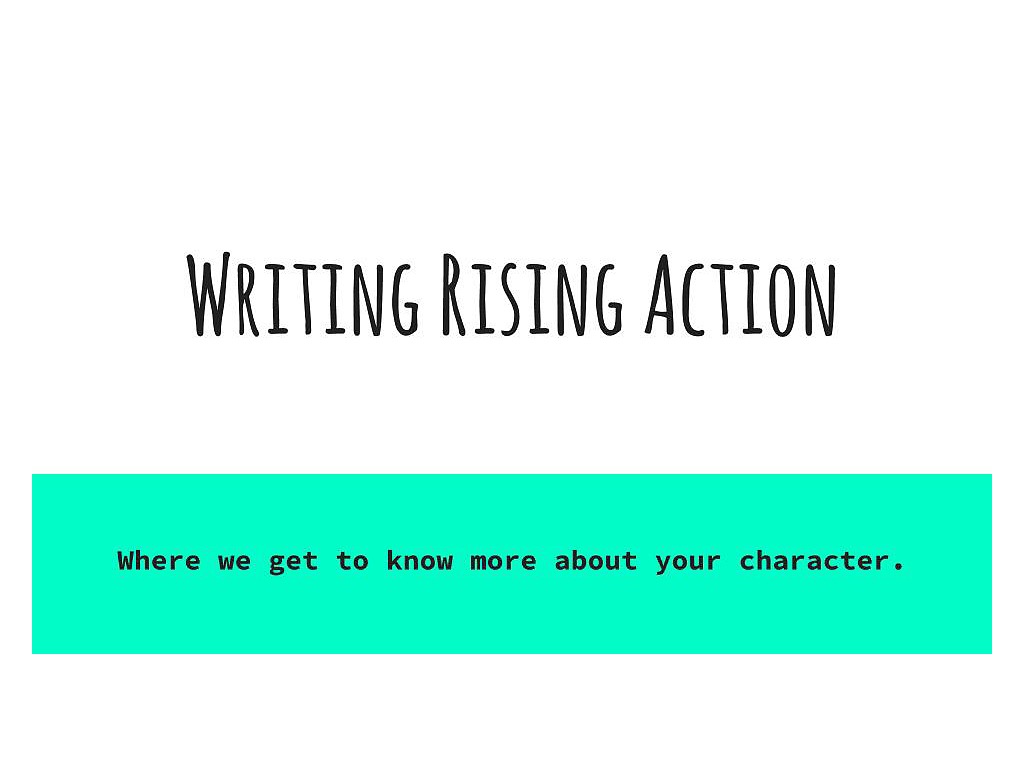

This structure is by no means perfect and is in some ways at odds with how modern-day writers plan their stories.

Freytag’s PyramidĪnother way of plotting your story is by following Freytag’s Pyramid, which is the brainchild of nineteenth century playwright and novelist, Gustav Freytag who realised that all his favourite playwrights (including non-other than Shakespeare himself) followed the same distinct, five act arc, which could be plotted into a pyramid structure. It ties up loose ends, answers unanswered questions and shows the main character in their new normal, inevitably changed by the events of the story. This is otherwise known as the resolution, and pretty much does what it says on the tin. For example, in The Hunger Games, this is where Katniss and Peeta threaten suicide rather than fight one another to the bitter end.ĭenouement. This is when the building tension reaches a breaking point, and the conflict is resolved once and for all. Will she sacrifice herself to let Peeta live, or will she kill the person she cares for to be able to return home to her sister?Ĭlimax. But as the two grow closer, this moral dilemma is weighted with emotion as Katniss learns that the rules are changed so that there can only be one winner. The Hunger Games presents Katniss Everdeen with a continuous moral dilemma, which is tested to the max when her competitor Peeta announces a “fake” story of his burgeoning love for her. A final, life-changing decision for the protagonist. Essentially, the dilemma is the do-or-die moment of the story. The dilemma/crisis is often confused with the climax of the story, particularly as they come hand in hand (or one after the other). The reader is taken on Katniss’ journey in the games, the challenges she faces, the alliances she makes and her inner and external conflicts that she must overcome to survive.ĭilemma/Crisis. To continue with our example, the rising action in The Hunger Games kicks off immediately after Katniss Everdeen volunteers as tribute. As mentioned above, the rising action is the ‘meat’ of the story. For example, in The Hunger Games, the inciting incident is the main character, Katniss Everdeen, volunteering as tribute and taking her younger sister Prim’s place.

It typically occurs within the first one-third of a book. An inciting incident is an event that launches the main premise of the story. You also find out that every year, children from these districts are selected via a lottery to participate in a televised death match called The Hunger Games. For example, in Suzanne Collins’ The Hunger Games you are introduced to Panem, a North American country consisting of the wealthy Capitol and 13 districts in varying states of poverty. You will also get a feel of the underlying themes of the story here. It sets the scene and introduces the main character(s) and their dilemma. This is the beginning of the story (the opening chapters). The rising action is one of six, essential plot ingredients that make up the basic story structure.Įxposition. How Rising Action Ties Into Your Story Structure Let’s delve further into the components of the rising action and how it fits into a traditional story structure. In fact, I would go as far as saying that the rising action is your story. Without a strong rising action (essentially, the fuel that powers your narrative, keeps it moving and prevents it from stalling) the climax will inevitably fall short or seem unbelievable. Some writers believe that the success of a story hinges on the effectiveness of the climax, but I vehemently disagree. But in a romance novel, the rising action could be the characters’ journey to falling in love. For example, in a suspense or crime novel, the rising action could be the protagonist going on a journey to solve a mystery or crime. It also creates tension and suspense, which leads right up to the third essential element, the dramatic climax.
#RISING ACTIO SERIES#
It is usually made up of a series of events that lay down breadcrumbs, ask questions, and set roadblocks and conflicts that must be overcome. The rising action is the second of six essential plot elements, which comes right after the opening of a story, otherwise known as the exposition. In this guide, I’m going to show you that a carefully structured and robust plot is really all you need to make the most of your narrative arc. Do you want to know the secret to masterful, climatic storytelling that keeps readers turning the pages until the very last sentence?


 0 kommentar(er)
0 kommentar(er)
